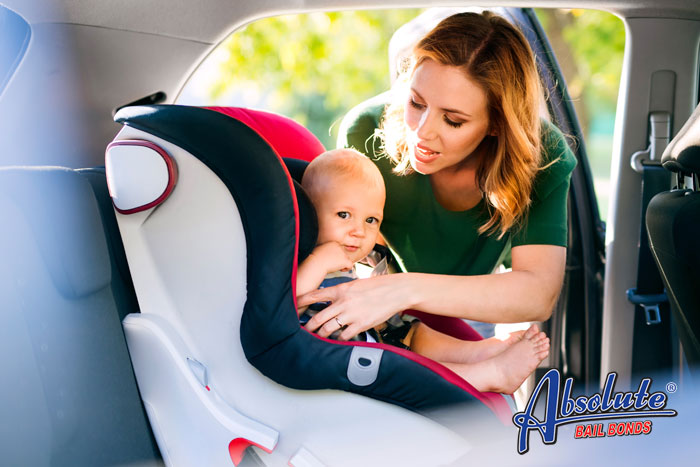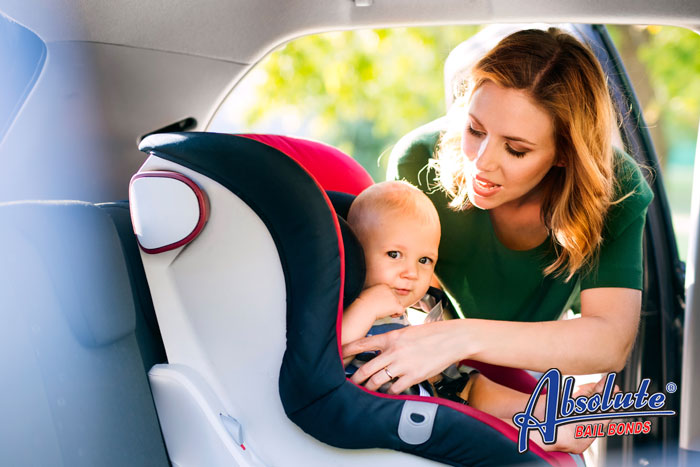
California’s Child Safety Seat Laws Keep Kids Safe
All of us know that young kids have to be strapped into a safety seat whenever they’re in a vehicle. The reason for this is because those safety seats save lives. The National Highway Traffic Safety Administration estimates that properly installed car seats reduce the number of infant fatalities suffered during car accidents by 54 percent and lower the number of serious injuries sustained during car accidents by 71 percent.
Like other states, California has strict child safety seat laws. Lawmakers used data collected during accidents that involved seriously injured children and accidents that involved a child fatality to decide how they could make it safer for parents to transport their children.
If you’re driving with children who are two years old or younger, the child must be securely strapped into a rear-facing car seat. The child will have to use this seat until they are either 40 pounds or 40 inches tall. The seat the child uses much comply with all the manufacturer’s height and weight restrictions.
Don’t assume that because your child is older or bigger that they no longer need special seating in the car. Children who are under eight years old can only ride in the back seat of the car and they must be in a car seat or a booster seat that’s designed to handle their weight and height. State law mandates that your child use the seat until they’ve passed their eighth birthday or until they are at least 4’9” inches tall.
It’s not enough to have your child secured in the car seat. The seat must also be properly installed. It is in your best interest to visit your local police or fire station. Someone who is on duty will have the training and time to make sure your car seat is properly installed. You are free to get help each time you purchase a different car seat or need to use a different vehicle.
Failing to make sure your child is properly secured in a safely installed child car seat is an infraction. You won’t go to jail if your child isn’t properly strapped into their car seat but you’ll get a ticket. The first time you get a ticket for not having a child in a car seat it’s a $100 fine. Each child’s car seat violation ticket after the first is a $250 ticket.
No matter how big a hurry you’re in when you leave your home, always take a few seconds to make sure your child is properly secured in their car seat before you pull out of your driveway.

California’s Regulations Regarding Car Seats
All parents know that infants should be contained in a car seat, however not all parents know what California’s laws are regarding car seats.
Infants and Car Seats
Any child that is two or under must be confined to a rear-facing car seat while they are in a vehicle. Failing to have your child properly secured in a car seat will result in a $500 fine and a point getting added to your driving record. Don’t assume that just because your child has passed their second birthday that it’s time to change their car seat. The law also states that the child needs to be at least 40 inches tall and or weigh at least 40 pounds before they graduate to a different type of car seat.
Car Seat for Children who are Between the Ages of 2 and 8
If your child has already celebrated their second birthday and also meets the height and weight requirements, you’re allowed to replace their rear-facing car seat for a front-facing model. California lawmakers won’t prevent you from making this transition, but they do want you to understand that the rear-facing car seats are considered 500% safer than the front-facing models.
The car seat should always be secured in the back seat unless there is a reason the back seat is considered unsafe or isn’t designed in a way that allows the car seat to be safely installed in space.
Transitioning from Car Seat to Booster Seat
There is no set age when your child can officially move out of their car seat and into a booster seat. California’s child car seat laws state that the transition can happen once your child has reached a height or weight that exceeds the limits of your front-facing car seat. In most cases, the child will be about 65 pounds. There are no requirements about the type of booster seat your child uses, though it does have to be a seat that can be safely installed in the car.
Your child is allowed to move out of the booster seat when they turn 8 or when they reach a height of 4’9”.
Make Sure the Car Seat is Properly Installed
An improperly installed car seat is nearly as dangerous as driving around without your child in a car seat. Don’t assume that you know what you’re doing. Whenever you get a new car seat or a new car, it’s in your best interest to take the entire setup to your nearest police station. One of the officers will happily examine the car seat and make sure it’s properly installed.
Rather than moving the car seat from one car to another, you should keep a car seat in each vehicle. Not taking the seat in and out of different vehicles not only extends the life of the car seat but also reduces the risk of it not getting installed properly.

